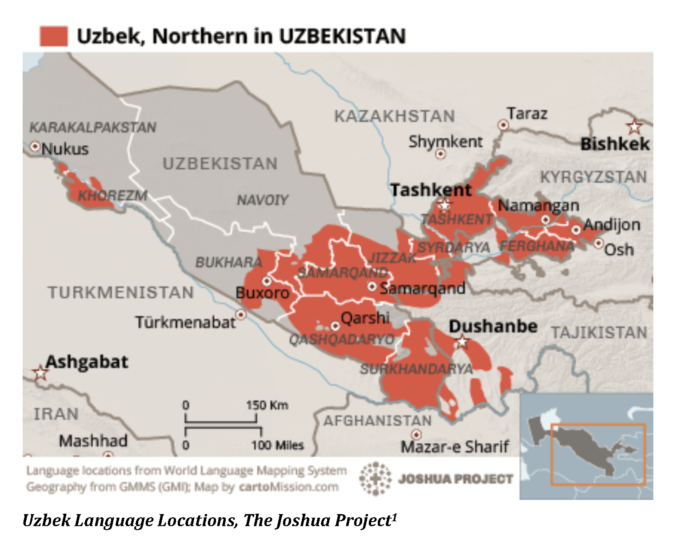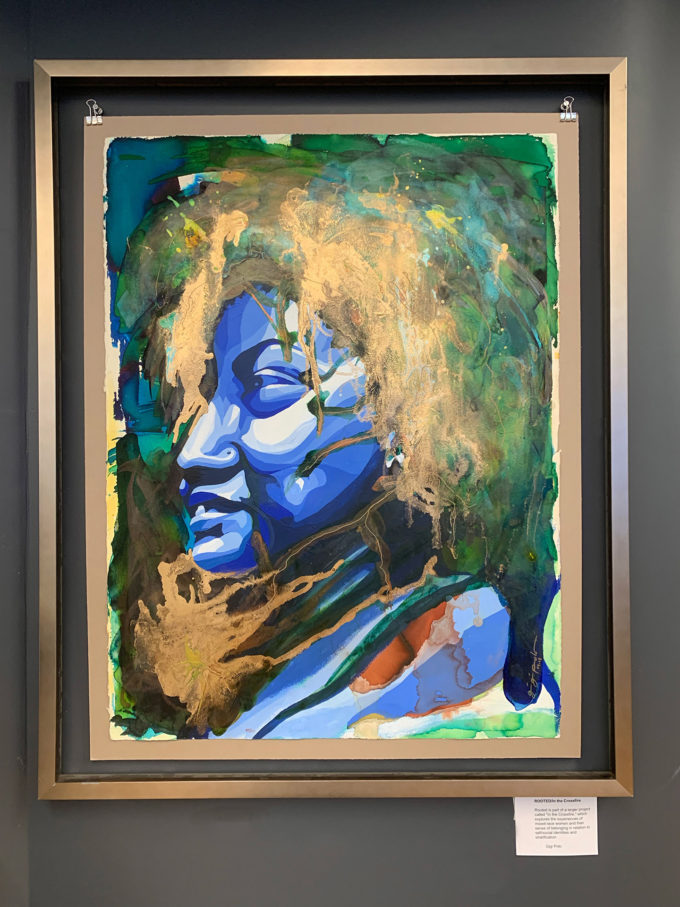English as Lingua Franca (ELF) Debate: Ideas in Flux
Although this artifact is a short response to our course readings and research, it is the root of many areas of research with which I currently engage. This artifact furthered my research on code-switching, i.e. Spanglish, code-mixing, like dialects, and disglossia—of low and high English colloquial variants—which became the foundation of my research on ELF (English as Lingua Franca) pros, cons, and debate; this research paper also sparked my interest in language justice theory, frameworks, and practices while giving the tools to critically analyze theories of colonialism, standard English(es) and their socio-linguistic effects in this global world.
The ELF Debate
In today’s global world, a universal language is paramount to open up communication channels and ignite social and economic growth. Even though the English language has gained the grounds into becoming a Lingua Franca, its stance is still problematic, especially in relation to social conventions of language use, stereotypes, identity constructs, and pluricentric dynamics. A major conflict that I will address later in this paper, is the idea of ELF becoming a universal coded-system (as explored by House, 1999, p.74 and cited by Jenkins, 2006, p.161); this view of developing a planned ELF, which includes both native-English speakers and non-native English speakers, foresees a systemic change in which native-English speakers follow ELF agenda. If this were to happen, ELF needs to be based on, rather pragmatic, brain-based research beyond socio-linguistic dynamics.
In general terms, Lingua Franca is understood in the mainstream as:
“lin·gua fran·ca
ˌliNGɡwə ˈfraNGkə/
noun
- a language that is adopted as a common language between speakers whose native languages are different.
- historical
a mixture of Italian with French, Greek, Arabic, and Spanish, formerly used in the Levant.” (“Lingua Franca” Google search, June 27, 2016)
In the field of linguistics, English as a Lingua Franca (ELF) has been introduced as a way to avoid confusion with the terms International English (local Englishes varieties in non-English speaking countries) and English as an International Language (for communications across borders) (Seidlhofer, 2004, as cited by Jenkins, 2006, p.160). Many authors (Jenkins, 2006; Dauer, 2005; Dewey, 2013) state that ELF is a pluricentric variety of English, widely used across borders; a dynamic, emergent language for non-native English speakers (NNSs) to communicate with other NNSs, which can be adapted by speakers of many backgrounds—different L1s, bilingual, multilingual— indistinctively. “The World Englishes movement recognizes that “more than 300 million non-native English speakers (NNSs)…communicate more with each other than with native English speakers (NSs) (Dauer, 2005, p.544). Moreover, in a more formal practice, ELF excludes NSs from their data collection, argumenting that as a universal language for NNSs, comparing it with what is considered conventional or institutionalized English (US and British) is not a relevant assessment for intelligibility (Jenkins, 2006; Seidlhofer, 2011). In defining the scope of ELF—in terms of its constituents—the UNESCO conference of 1953 shared a broad, widespread, description of Lingua Franca: “A language which is used habitually by people whose mother tongues are different in order to facilitate communication between them” (p.42, as cited by Samarin, 1968) while Kachu’s Three Circle Model (Kachura, 1992, as cited by Jenkins, 2006, p. 161) explains the expanded circle as ELF grounds: of countries where the language is used mainly for international communications as opposed to having been acquired through political processes, of interventions, migrations, and colonization. Professor of Linguistics, William Samarin, in Lingua Franca of the World (1968) encompasses aspects of the definitions aforementioned, especially when he shares various types of Lingua Franca based on the function of the language: trade language for commercial contexts, contact language for daily usage, and universal language as used across borders; Samarin further explains how linguas francas develop through time (be it naturally or planned) in a language-mixing and lexical borrowing process, of overall “pidginization” and ultimate creolization (Samarin, 1968, p.661, 666).
In this respect, when outlining the scope, purpose, and ultimate goals of ELF, many tensions arise. First and foremost, the tensions between those who believe that ELF needs to become a universal coded system (House, 1999, p.74 and cited by Jenkins, 2006, p.161) in contrast with those who argue that this approach is a reductionist view that limits the pluricentric nature of ELF, stressing the value of ELF as a dynamic language that allows for many local varieties, and the importance of providing a language choice (Sung, 2013; Seidlhofer, 2005) that questions the very nature of language “standards” (Rubdi & Saraceni, in press, as cited by Jenkins, 2006, p. 162). Subsequently, when thinking of ELF solely in terms of a planned coded system, tensions between intelligibility and conventions come into play; in this respect, Seidlhofer’s empirical research (2004) and others (Jenkins 2000; Meierkord 1996) have provided ELF corpora, such as the Vienna-Oxford International Corpus of English (VOICE), which has shown that “…although ELF speakers often do not use the third person singular present tense ‘-s’ marking in their verbs, this does not lead to any misunderstandings or communication problems.” (Seindlhofe, 2005, p. 340). Jenkins argues that certain aspects of innotation, expect nuclear stress, are teachable, and rarely unintelligible amongst NNSs but become problematic when compared with conventional Englishes (Jenkins, 2000, as cited by Dauer, 2005, p. 546). This idea of maintaining the conventional and institutionalized Englishes (US and British), which are based on historical, political processes, such as colonization, only perpetuates Imperialism and power relations (Jenkins, 2006, p. 172; Dauer, 2005, p.545).
These conflicting ideas—of universal code versus non-standardized language for global intelligibility, posit a challenge in developing a planned Lingua Franca, tailored for a global community of NNSs in that the debate expands way beyond issues of language to larger social, economic, and political spheres. ELF affects its constituents in deeper levels: as individuals in forming identities of self, as groups and their social identities, stereotypes, and discrimination, just to name a few. Starting at a micro level, the ways in which certain ELF keywords and processes are operationalized, e.g. intelligibility, teachable and learnable tasks in relation to NNSs and NSs is problematic. Rebecca Dauer (2005), who is a phonetician and ESL teacher, defines the Lingua Franca Core as a framework to teach pronunciation—including word-stress and intonation—an aspect of teaching English that Jenkins finds unteachable (Jenkins, 200, p.150, as referenced by Dauer, p.546) calling word–stress a “grey area” (Jenkins, 200, p.150, as referenced by Dauer, p.547). Dauer argues against Jenkins dismissal of teaching pronunciation (aspiration, vowel length, or nuclear stress) as being regarded as an unteachable trait, noting that these are not only teachable and learnable but rather necessary; for Dauer this area is of great importance since phonemes do not appear in writing form, and could create confusion in communication. Dauer also observes that Jenkin’s data (2006) is too narrow in sample, not randomized enough, and biased in selecting educated subjects. As Dauer discussed in her article The Lingua Franca Core: A New Model for Pronunciation Instruction (2005), intelligibility is difficult to define, assess and measure, since the concept lives in respect to something else, i.e. intelligibility amongst native speakers, between native and non-native speakers, and amongst non-natives (Dauer, 2005). This discourse, although technically specific, also touches upon the conflict in regards to the social constructs of identity that come about through language acquisition, accents, and native-like fluency.
Another layer of complexity, in regards to intelligibility, is Jenkins’ (2006) views of learners as being limited by the use of bottom-up strategies; her argument of NNSs using bottom-up processing is one of Dauer’s critiques, which might come from the ways in which teachers teach rather than the learners’ ways of learning, that is, from the ways in which teachers deliver the material and enable learning experiences. If instead, students receive a body of top-down strategies—of reflective practices rather than direct decoding—would a shift in the processing involved in both learning and decoding the language occur? In respect to teaching ELF, there is a tension between untrained NSs and trained NNSs teachers and assessing which group would bring a more effective learning experience to learners; if the former, students would learn by immersion, but are limited by the teachers’ own knowledge of the language; if the latter, teachers have the training to use teaching styles relevant to the learners’ language usage, removing native English standards native-like fluency as goal, and would be more open to a universal code. The trained teacher could provide top-down strategies to help the learner advance the language, but there is also the challenge of keeping their language universal rather than local.
However, an awareness of how each of these processes constructs social identities and values, and, in my opinion, could potentially devalue local identities and transfer the utmost value to foreign cultures if not delineated with caution, is of great importance. ELF users usually practice the language in professional spheres of the expanded circle with other NNSs, needing a technical or library language that might not need the familiar language of NSs. i.e. Euro-English (McArthur, 2002, as mentioned by Jenkins, 2006, p. 165). Therefore, even though I agree that a coding system is of value, it is important to also pay attention to the impact of the coding system—and its varieties—if, and when, it develops mainly from spaces in which the language is highly regarded, i.e. internationally-valued professional spheres vs. self-taught transcultural professions, like local natives working on tourist areas who learn the language by immersion but lack writing or reading knowledge; a conflict of defining varieties in regards to the phenomena of diglossia (Ferguson, 1972, cited by Shridar,1996), of language varieties regarded as high (H) and low (L). As Cogo argues (2012) there needs to be a systemic change—from the inside out of societies—in which ELF is redefined based on its most fundamental goals and, I would add, in which is perceived as an added value rather than a tool for exclusion, judgment and stereotyping.
Therefore, if local varieties spring off, developing many Englishes, could ELF be really used, in practical terms, as a universal, cohesive, and unifying, form of communication? And if it could, how could it be simultaneously pluricentric, local, and universal and, at the same time, scape becoming a form of supremacy, oppression, and totalitarianism? To break with imperialism, and systems of control and supremacy, transfer, interference, and fossilization need to be redefined in ELF as being part of a new coding system in outer circles, of NNSs—rather than being perceived as interlanguage errors—since ELF is not to be compared with the mother-tongue of neither American nor British standards (Seidlhofer, 2011); however, solutions such as appropriating the language for local use (See Canagarajah’s ethnographic research, 1999; Sung, 2013) could develop into a multiplicity of dialects that create more confusion than universality amongst its constituents.
As it stands today—and leaving aside the issue of political power and oppression—the value of devising a coded standard English to foster social identities, of global citizens and cosmopolitans, is of great value. However, ELF encompasses a complex system of social, political, and economic relations that need to be negotiated; tensions amongst groups of researchers have politicized the issue, mainly because of individual research interests and biases, which attribute more value to their personal interest rather than research-based data. In further developing ELF, researchers of various fields—of education, psycho-linguistics, neuro-linguistics, and cognitive neuroscience—need to engage, and collaborate, in in-depth research, of both theoretical frameworks and practical applications; developing ELF as universal code needs to develop from scientific research of human coding and social dynamics, rather than solely through an analysis of interlanguage generalizations, which are still site-specific, culturally bound, based on learners L1, (root languages) as opposed to being universal. Furthermore, assessing dynamics of Englishization (the impact of English in local communities and their languages) and nativization (the impact of local culture and languages on English) in bilingual and multilingual societies is paramount because these dynamics affect the ways in which English is both taught and learned, and have great impact on how knowing/not knowing the language is perceived in societies and global spheres. Norton Peirce research on identity and investment opens up the discourse of bilinguals becoming “cosmopolitans” rather than devaluing their own social identity by assuming foreign attitudes (Jenkins, 2006, p. 167).
Consequently, these intelligible-learnable features are mostly perceived as learners’ limitations in acquiring certain conventional English features, which has been discussed above as being, beyond problematic, oppressive. Instead of looking at interlanguage errors (interference), transference and fossilization as the frames from which to device a coding system for ELF, understanding brain learning processes, through the lens of neuro-linguistics, that are not culturally bound, would be a better approach (Look at Noam Chomsky Universal Grammar; Steven Pinker, The Language Instinct). Paramount to ELF is taking into consideration the repercussions of this universal language in global societies and human life at a large scale, and the ways in which a unifying language could also preserve both self and social identities, and cultural expressions of the world.
References:
- Dauer, R.M. 2005. ‘The Lingua Franca core: a new model for pronunciation instruction?’ TESOL Quarterly, 39/3: 543-550.
- Dewey, M. 2013. ‘The distinctiveness of English as a Lingua Franca.’ ELT Journal, 67/3: 346-349.
Jenkins, J. 2006. ‘Current perspectives on teaching world Englishes and English as a Lingua Franca.’ TESOL Quarterly, 40/1: 157: 182. - Jenkins. J. 2013. ‘English as a Lingua Franca from classroom to classroom’, ELT Journal, 66/4, 486-494.
- Kachru, B. B. (1992). The other tongue: English across cultures. University of Illinois Press.
- Park, G. (2013). ‘Writing is a way of knowing’: writing and identity. ELT journal, 67(3), 336-345.
- Samarin, W. J. (1968). Lingua francas of the world.
- Seidlhofer, B. (2005). English as a lingua franca. ELT journal, 59(4), 339.
- Sridhar, K. K. (1996). 9 Societal multilingualism. Sociolinguistics and language teaching, 47.
Sung, C. C. M. (2013). English as a Lingua Franca and English language teaching: a way forward. ELT journal, 67(3), 350-353.




Im very pleased to find this page. I wanted to thank you for ones time just for this wonderful read!! I definitely really liked every bit of it and i also have you book-marked to check out new things on your blog.
You ought to be a part of a contest for one of the finest sites on the web. I am going to recommend this web site!
I must thank you for the efforts youve put in penning this blog. Im hoping to view the same high-grade blog posts from you later on as well. In fact, your creative writing abilities has inspired me to get my own, personal blog now 😉
Nice post. I learn something new and challenging on websites I stumbleupon on a daily basis. Its always exciting to read articles from other writers and use something from their sites.
Good blog post. I absolutely appreciate this website. Keep writing!